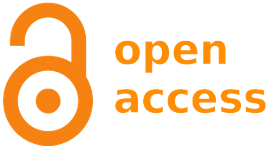Quality of life, general health and anxiety in dental students with temporomandibular disorders
Abstract
This study evaluated the prevalence of temporomandibular disorders (TMD) in dental students and its association with psychosocial factors (general health, quality of life and anxiety). Sixty students were initially selected and analyzed for TMD presence by the Diagnostic Criteria for TMD (DC/TMD). The participants answered self-administered questionnaires to assess general health (General Health Questionnaire – GHQ), quality of life (World Health Organization Quality of Life – WHOQOL-brief), and anxiety (State-Trait Anxiety Inventory – STAI). The prevalence of TMD among the participants was 43.33% (n = 26), 26% (n = 16) were diagnosed with painful disorders, being myalgia the most prevalent diagnosis (21.67%; n = 13). About 16.67% (n = 10) of the participants presented disc displacement with reduction. All indicators of general health showed statistically significant difference such as psychological stress (p = 0.004), death wish (p = 0.006), distrust in performance (p < 0.001), sleep disturbance (p = 0.025), psychosomatic disorder (p < 0.001), and general health (p = 0.003). Quality of life was associated with the presence of painful disorder in the physical (p = 0.001), psychological (p = 0.003) and general (p = 0.015) dimensions. The state of anxiety (STAI-S) showed statistically significant difference (p = 0.042). In conclusion, painful muscle disorder was the most prevalent TMD subtype in dental students and several psychosocial factors are important indicators of TMD presence.
Downloads
DECLARATION OF ORIGINALITY AND COPYRIGHTS
I Declare that current article is original and has not been submitted for publication, in part or in whole, to any other national or international journal.
The copyrights belong exclusively to the authors. Published content is licensed under Creative Commons Attribution 4.0 (CC BY 4.0) guidelines, which allows sharing (copy and distribution of the material in any medium or format) and adaptation (remix, transform, and build upon the material) for any purpose, even commercially, under the terms of attribution.
Read this link for further information on how to use CC BY 4.0 properly.























5.png)







